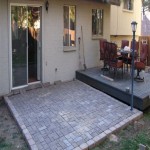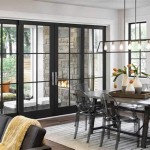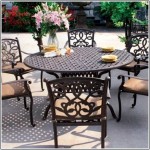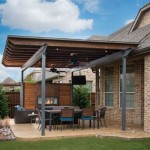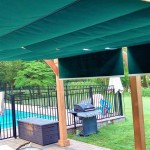Benefits of Aluminum Patio Covers: A Do-It-Yourself Guide
Extending outdoor living spaces is a common homeowner aspiration. Among various options for achieving this, aluminum patio covers stand out as a practical and aesthetically pleasing choice. Choosing to install an aluminum patio cover as a do-it-yourself project offers numerous advantages, ranging from cost savings to customization opportunities. This article explores the key benefits of opting for a DIY aluminum patio cover project.
Cost-Effectiveness and Budget Control
One of the most significant advantages of a DIY aluminum patio cover is the potential for substantial cost savings. Hiring professional contractors can significantly increase the overall cost of the project due to labor expenses. By undertaking the installation oneself, homeowners eliminate these labor costs, allowing for a greater allocation of the budget towards higher-quality materials or other enhancements.
Furthermore, a DIY approach provides greater control over the budget. Homeowners can meticulously research and compare prices from different suppliers for aluminum components, fasteners, and other necessary materials. This enables informed purchasing decisions that align with specific budgetary constraints. It also allows for phasing the project, purchasing materials as finances allow, rather than incurring a large upfront sum.
DIY projects also minimize the chances of unexpected expenses that sometimes arise during professional installations. With contractors, unforeseen site conditions or design modifications can lead to change orders and increased costs. When handling the project independently, the homeowner has more direct control over project scope and potential adjustments, preventing cost overruns associated with external labor.
The savings generated from a DIY installation can be reinvested in other landscaping improvements or outdoor furniture, enhancing the overall functionality and aesthetic appeal of the patio area. The cost savings can also justify selecting a higher-quality aluminum patio cover kit that will provide better durability and longevity, offering a greater return on investment over time.
Customization and Design Flexibility
DIY aluminum patio covers grant homeowners unparalleled customization options. Unlike pre-fabricated structures offered by contractors, a DIY approach allows for tailoring the design, dimensions, and features of the patio cover to precisely match the existing architectural style of the house and the specific needs of the outdoor space. Homeowners can incorporate unique design elements that reflect their personal preferences.
The flexibility extends to the choice of materials. While aluminum is the primary component, homeowners can select specific grades, finishes, and colors of aluminum to complement the existing aesthetics. Different types of roofing materials, such as opaque panels for complete shade or translucent panels for diffused light, can also be integrated into the patio cover design. This level of customization is often difficult or prohibitively expensive to achieve with professional installations.
DIY projects also allow for readily adapting the structure to unusual site conditions. If the patio area has an irregular shape or presents unique challenges, such as the presence of existing structures or landscaping features, a DIY approach allows for modifying the design to overcome these obstacles. This often involves making precise cuts and adjustments during the installation process, something that might be more difficult to coordinate with a contracting team.
The customization extends beyond the physical structure of the patio cover. Homeowners can integrate features such as lighting, ceiling fans, or even retractable screens into the design. These additions can enhance the functionality and comfort of the outdoor space, making it more suitable for relaxation, entertainment, or outdoor dining. The possibilities are limited only by the homeowner's imagination and skill level.
Increased Sense of Accomplishment and Project Ownership
Undertaking a DIY aluminum patio cover project provides a significant sense of accomplishment upon completion. The satisfaction of designing, building, and installing a functional and aesthetically pleasing structure can be deeply rewarding. This sense of ownership fosters pride in the home and encourages further DIY projects in the future.
The process of installing the patio cover also provides valuable hands-on experience and skills development. Homeowners gain practical knowledge in areas such as metalworking, carpentry, and construction techniques. These skills can be applied to other home improvement projects, saving money and increasing self-sufficiency in the long run. The physical effort involved in the project also contributes to a sense of accomplishment and personal satisfaction.
Moreover, the process of researching, planning, and executing a DIY project fosters problem-solving skills. Homeowners encounter challenges along the way and learn to overcome them through careful planning, research, and creative thinking. This ability to tackle complex tasks independently can be a valuable asset in other aspects of life.
The increased sense of ownership extends to the maintenance and upkeep of the patio cover. Homeowners who have built their own structures are more likely to take pride in maintaining them properly, ensuring their longevity and aesthetic appeal. This proactive approach to maintenance can prevent costly repairs in the future.
Reduced Disruption and Improved Scheduling
Engaging professional contractors for patio cover installation can result in significant disruption to daily life. Contractors often operate on their schedules, which may not align with the homeowner's preferences. This can lead to delays, unexpected interruptions, and a general sense of loss of control over the project timeline. A DIY approach eliminates these disruptions by allowing the homeowner to dictate the pace and timing of the installation.
With a DIY project, homeowners can work on the patio cover at their convenience, fitting the installation into their existing schedules. This flexibility is particularly beneficial for individuals with busy work lives or other commitments. Work can be done in stages, allowing for breaks and adjustments as needed. This greatly reduces the stress associated with external contractors, whose timelines are fixed.
DIY projects also eliminate the need to coordinate with multiple contractors or subcontractors, further simplifying the scheduling process. Homeowners have complete control over the procurement of materials and the execution of each step of the installation. This reduces the risk of miscommunication or delays caused by third-party involvement.
Furthermore, a DIY approach allows for pausing the project as needed. If unexpected circumstances arise, or if the homeowner needs additional time to research a particular aspect of the installation, the project can be temporarily halted without penalty. This flexibility is invaluable for homeowners seeking to maintain control over their time and resources.
Enhanced Material Quality Control
Opting for a DIY approach allows for greater control over the quality of materials used in the patio cover construction. Instead of relying on a contractor's selection, homeowners can research and select specific grades and brands of aluminum, fasteners, and roofing materials. This ensures that the patio cover is built with durable, long-lasting components that meet specific performance requirements.
Homeowners can also carefully inspect materials upon delivery, ensuring that they are free from defects or damage. This proactive approach to quality control prevents the use of substandard materials that could compromise the structural integrity or aesthetic appeal of the patio cover. It also allows homeowners to address any issues with suppliers promptly, minimizing potential delays or complications.
By selecting materials themselves, homeowners can prioritize factors such as corrosion resistance, UV protection, and structural strength. This ensures that the patio cover is capable of withstanding the specific environmental conditions in the area, such as heavy rain, strong winds, or intense sunlight. This tailored approach to material selection can significantly extend the lifespan of the patio cover and minimize the need for future repairs.
Furthermore, homeowners can choose to source materials from local suppliers or manufacturers, supporting the local economy and reducing the environmental impact of transportation. This commitment to sustainable sourcing aligns with the growing trend towards eco-friendly home improvement practices. This allows for informed decisions on materials, focusing on environmentally ethical production and shipping.

25 Diy Patio Cover Ideas 2025 Easiest Options

25 Diy Patio Cover Ideas 2025 Easiest Options

25 Diy Patio Cover Ideas 2025 Easiest Options

Aluminum Patio Covers Alumawood Diy Kits

Aluminum Patio Covers Alumawood Diy Kits

What It S Like Using A Diy Patio Cover Desert Sun Patios

25 Diy Patio Cover Ideas 2025 Easiest Options

Aluminum Patio Covers Alumawood Diy Kits

25 Diy Patio Cover Ideas 2025 Easiest Options

Guide To Aluminum Patio Covers Alumicenter Inc
Related Posts

